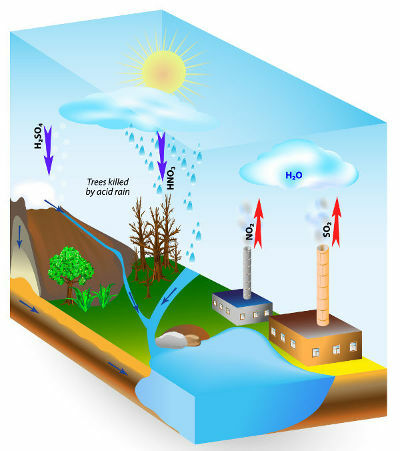Currently, Organic Chemistry is understood as:

Definition of Organic Chemistry
However, Organic Chemistry was named after a misconception that these substances were only extracted from living organisms.
In the early 18th century, Antoine Laurent de Lavoisier (1743-1794) discovered that many of the compounds found in living things were made up of the element carbon. So the scientist Jöns Jacob Berzelius (1779-1848) created the vitalism theory or vital force theory, which said that such substances arose from materials present in living beings and a non-material content - called vital force – that could not be created by human beings. In other words, organic compounds were only produced in living organisms, plants and/or animals, and could never be synthesized by man in the laboratory.
However, in 1825, the German physician Friedrich Wöhler (1800-1882) managed to synthesize urea ((NH2)2CO) - an organic compound of animal origin - from heating ammonium cyanide (NH4CNO), which is an inorganic substance. Thus, the theory of vitalism fell to the ground and Organic Chemistry came to be classified as was mentioned at the beginning, and since this name was already in widespread use, it continued to be used.
Do not stop now... There's more after the advertising ;)

Friedrich Wöhler synthesized urea - the first organic compound synthesized in the laboratory
Today, there are more than 19 million organic compounds that participate in vital functions in the organism of animals and plants, in addition to being present in countless materials used in everyday life, ranging from plastics to fuels, cleaning products, cosmetics and medicines.
The compounds that have the element carbon, but which are considered inorganic, are those of mineral origin, which include calcium carbonate (CaCO3), carbon dioxide (CO2), sodium hydrogen carbonate, NaHCO3; between others.
To facilitate the study of so many substances, they are divided into organic functions, which are groups of substances that have the same grouping of atoms in their structures, which results in similar chemical behavior. Some of these organic functions are: hydrocarbons, alcohols, aldehydes, ketones, carboxylic acids, amines, amides, between others.
This area of study is very important, as it allows us to understand the structure of these substances, their chemical behavior and the reactions in which they are involved, which can then be used to benefit the being. human.
By Jennifer Fogaça
Graduated in Chemistry
Would you like to reference this text in a school or academic work? Look:
FOGAÇA, Jennifer Rocha Vargas. "What is Organic Chemistry?"; Brazil School. Available in: https://brasilescola.uol.com.br/o-que-e/quimica/o-que-e-quimica-organica.htm. Accessed on July 27, 2021.



